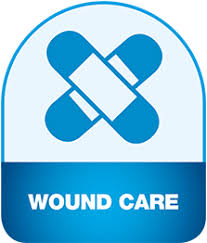
Romashkina Anastasia Sergeevna
Medical center Avromed
Title: Protocols of correction of inflammatory dermatoses with injections of hyaluronic acid and sodium succinate
Biography
Biography: Romashkina Anastasia Sergeevna
Abstract
Relevance: Many skin diseases, such as atopic dermatitis, seborrheic dermatitis, eczema, acne, rosacea and others, during the reconvalescence need the active participation of both a dermatologist and a cosmetologist with the goal of full physiological epithelization, moisturizing and preventing scarring and pigmentation. After the inflammatory dermatoses, we observe not only deeply dehydrated skin, which is associated with a decrease in the amount of hyaluronic acid, but also changes in the microcirculatory, which manifests itself in the form of impaired tone and vascular permeability. Often during the convalescence of dermatoses, after healing, there remains stable hyperpigmentation or depigmentation, as well as atrophic or hypertrophic scars, which are facilitated by a long process of regeneration at the sites of damage.
Purpose of the Study: To identify improvements in the structure of the epidermis and derma during the procedures performed with the use of the preparation, containg hyaluronic acid and sodium succinate.
Materials & Methods: We observed 20 women aged 30 to 40 years in the stage of remission of atopic dermatitis (two patients), seborrheic dermatitis (seven), rosacea (two), acne (seven), eczema (two). All women underwent procedures, using a combined preparation containing sodium succinate (16 mg/ml) and hyaluronic acid (11 mg/ml or 18 mg/ml). The drug was administered intradermally by the technique of papular injections with a 30 G needle, 2.0 ml per procedure, at intervals of one, every two weeks.
Evaluation: Satisfaction of the results of the procedures was assessed according to the International Global Aesthetic Improvement Scale (GAIS), as well as the questioning of patients before and after the procedures. Control of skin changes at the structural level was carried out by using the method of confocal laser scanning microscopy in vivo (CLSM).
Results: All patients showed a positive dynamic: A reduction in the intensity of hyperpigmentation, a more active skin regeneration (compared to similar areas in the same patient), improved skin turgor and elasticity, increased skin hydration. After the treatment there was a decrease in the severity of telangiectasia (mean score before treatment – 1.2, after treatment – 0.2), pigmentation (1.7 and 0.9 points), dry skin (1.1 and 0.1 points). A good moisturizing effect was noted in 18 (90%) patients, moderate – in 2 (10%). When studying the skin by the method of KLM, a reduction in the area of hyperpigmentation, as well as a reduction in its severity, regression of hyperkeratosis, a more even arrangement of the fibrous structures of the dermis, and improvement of microcirculation were observed. There was also an increase in skin thickness due to the above processes. Allergic reactions to drug administration have not been recorded. Absence of effect and negative dynamics during therapy were not revealed.
Conclusion: The protocol of using hyaluronic acid and sodium succinate has a good tolerance, promotes the acceleration of skin regeneration, restoration of normal skin hydration, normalization of pigmentation.

